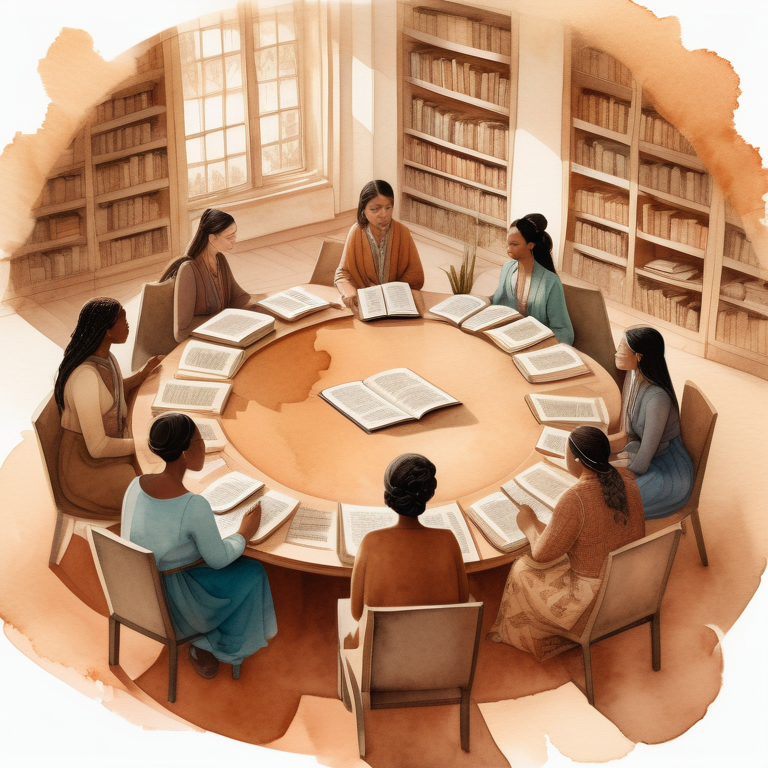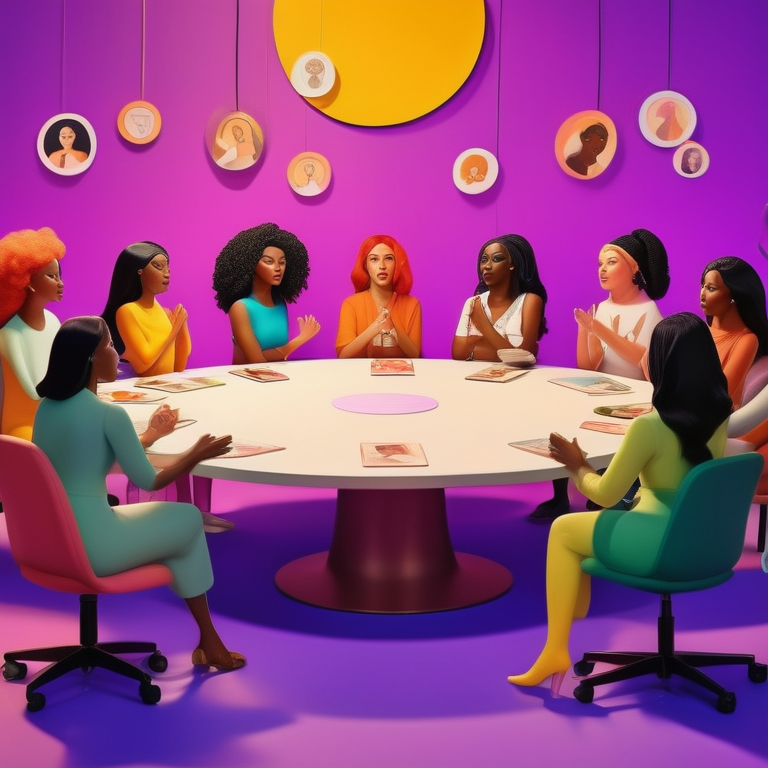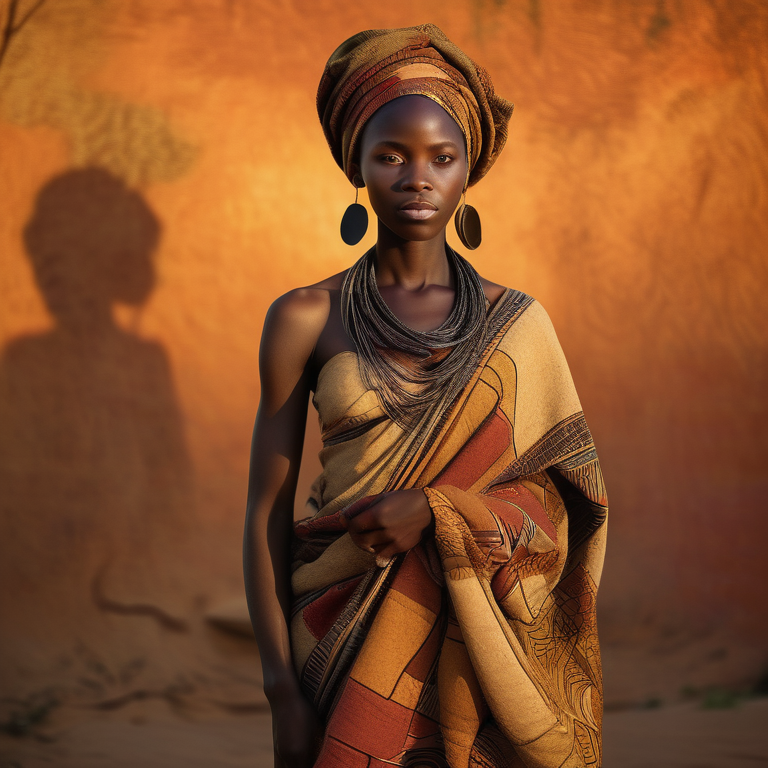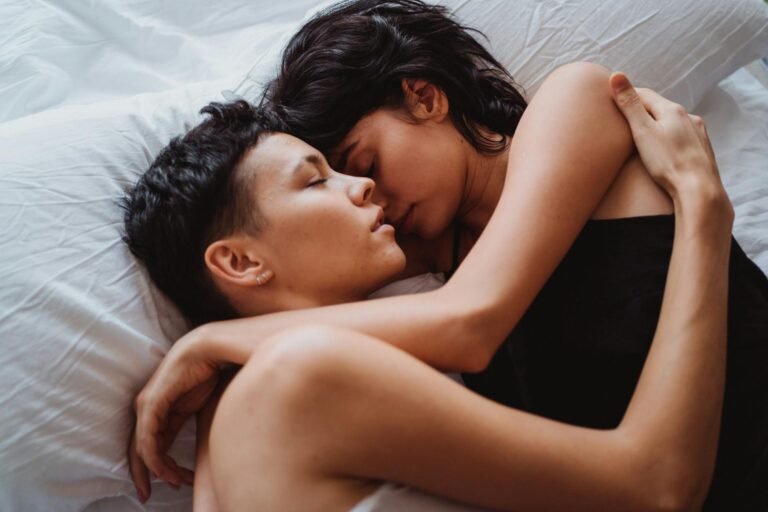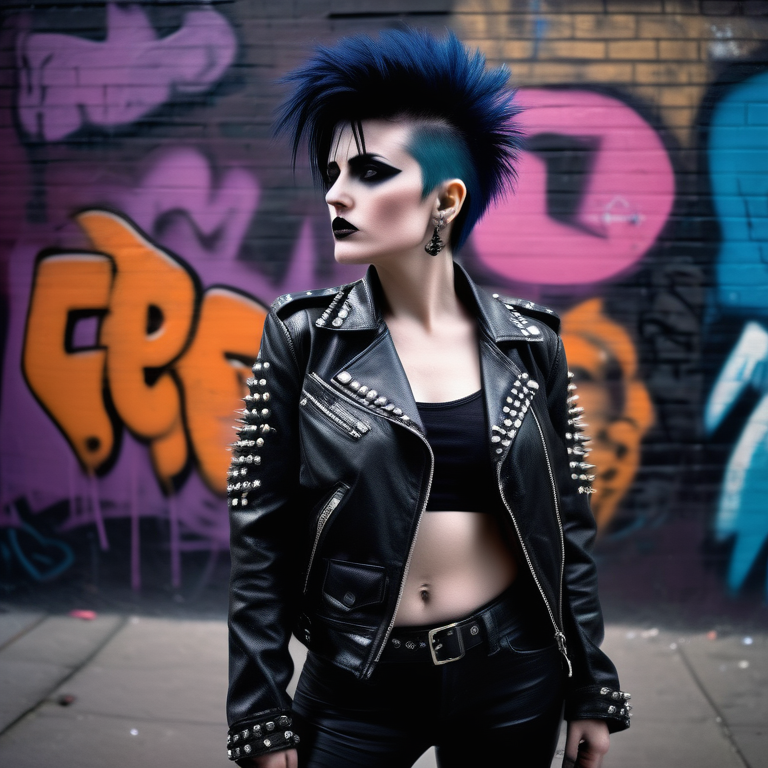Exploring Women’s Sexuality in Film: A Comprehensive Guide
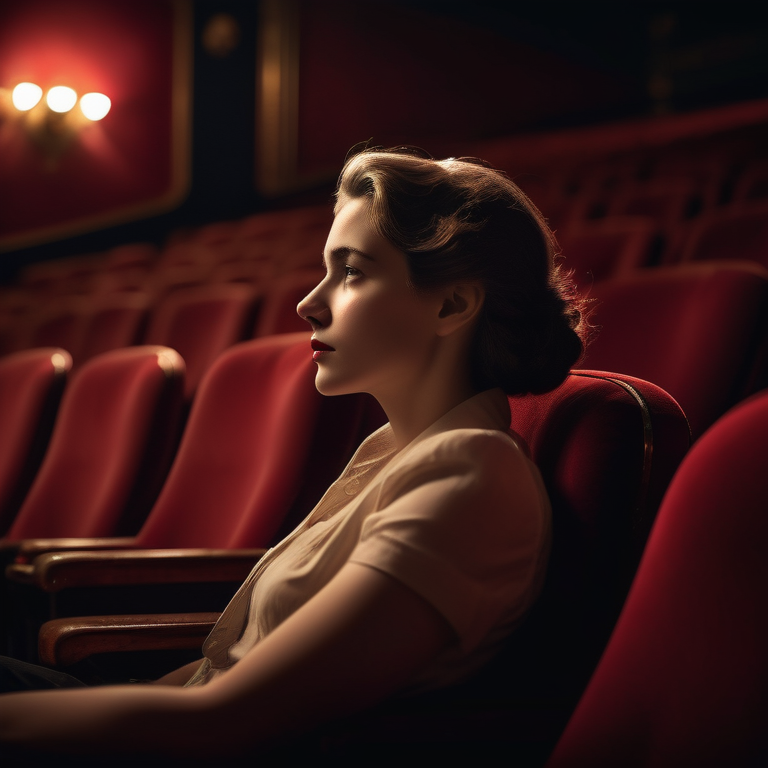
Key Highlights
- The historical perspective of women’s sexuality in film reveals the impact of censorship and societal attitudes.
- Pioneering films and female directors have played a crucial role in challenging norms and shaping the narrative of women’s sexuality in cinema.
- The evolution of female sexuality in film can be seen through the transition from objectification to agency and the representation of teenage girls in the 21st century.
- Different genres, such as romance and horror, offer unique spaces for exploring women’s desires and fantasies.
- Global cinema provides diverse perspectives on female sexuality, offering a glimpse into how different cultures portray this subject.
- Controversies and censorship have also played a role in shaping the representation of women’s sexuality in film.
Introduction
Women’s sexuality in film is a fascinating and complex topic that has been explored throughout the history of cinema. From the silent era to the present day, filmmakers have depicted various aspects of female desire, challenging societal norms and shaping the narrative of women’s sexuality on screen.
Throughout this comprehensive guide, we will delve into the historical perspective of women’s sexuality in film, examining the impact of censorship, the pioneering films and directors that have challenged norms, the evolution of female sexuality in cinema, the role of genre in depicting women’s desires, the portrayal of women’s sexuality in global cinema, and the controversies and censorship surrounding this subject.
By exploring these different aspects, we aim to shed light on the representation of women’s sexuality in film and its impact on societal attitudes and norms. We will also address frequently asked questions about must-watch films, the evolution of the portrayal of lesbian and bisexual women, recommended documentaries, common themes and tropes, and the influence of influential films on exploring women’s sexuality.
Join us on this journey as we navigate the diverse and nuanced world of women’s sexuality in film.
The Historical Perspective of Women’s Sexuality in Film
During the silent era, early representations of women’s sexuality often portrayed them as objects of desire or as damsels in distress. The enforcement of the Hays Code in Hollywood significantly restricted the explicit depiction of female sexuality on-screen, leading to more subdued narratives. The limitations imposed by censorship shaped the way women’s sexuality was depicted for decades to come, influencing the evolution of their portrayal in cinema.
The silent era and early representations
In the silent era, portrayals of female sexuality were often limited and constrained by societal norms. Early representations tended to depict women more as objects of desire rather than complex individuals with agency. The influence of the Hays Code further restricted the exploration of women’s sexuality on screen during this period, shaping the way female characters were presented and the themes that could be explored. These early depictions set the stage for the challenging of norms in later cinematic works.
The Hays Code impact on sexual depiction
During the era of the Hays Code, the portrayal of female sexuality in film faced substantial restrictions. The Code, aiming to regulate morality in cinema, heavily censored intimate scenes and suggestive content, particularly when it came to women. This led to a significant limitation on the exploration of women’s desires and experiences on screen. The impact of the Hays Code resulted in a diluted representation of women’s sexuality, constraining the depth and authenticity of their on-screen narratives.
Breaking Barriers: Key Films and Directors
Pioneering films and directors have propelled the exploration of female sexuality in cinema. Notable works like “Blue Is the Warmest Color” and directors like Dee Rees have challenged conventional narratives. Films such as these delve deep into the complexities of womanhood, presenting intimate and raw portrayals of female desires. These groundbreaking works pave the way for a more authentic and diverse representation of women’s sexuality in film, shaping a new era of storytelling in Hollywood and beyond.
Pioneering films that challenged norms
Exploring the concept of pioneering films that challenged norms unveils a rich tapestry of cinematic landmarks. These films, with their bold portrayal of female sexuality, shattered traditional boundaries. Works like “Blue is the Warmest Color” and “Heidi” depicted women’s sexuality with raw honesty, challenging societal expectations. Directors like Dee Rees and Abbie Cornish fearlessly explored taboo subjects, shining a light on the complexities of womanhood. These groundbreaking films paved the way for a more authentic and inclusive representation of women’s experiences in cinema.
Female directors shaping the narrative
In the realm of female directors shaping the narrative, notable filmmakers like Dee Rees and Céline Sciamma have significantly influenced the exploration of women’s sexuality in cinema. Films such as “Pariah” and “Blue Is the Warmest Color” delve deep into the complexities of intimate relationships and womanhood. Through their unique perspectives, these directors bring a fresh and authentic portrayal of female sexuality to the screen, challenging conventional stereotypes and providing a platform for nuanced storytelling. With their distinctive voices, they enrich the cinematic landscape with compelling narratives.
The Evolution of Female Sexuality in Cinema
Exploring how female sexuality has evolved in cinema provides a fascinating insight into societal shifts and cinematic trends. From the early silent era’s subtle representations to the bold and unapologetic storytelling of modern films like “Blue Is the Warmest Color,” the portrayal of women’s sexuality has undergone significant transformation. Directors like Dee Rees have skillfully navigated complex themes of intimacy and womanhood, offering nuanced perspectives on female desires. Hollywood has seen a rise in female-centric narratives, challenging traditional norms and empowering women both on and off the screen. The evolution of female sexuality in cinema reflects broader conversations around gender, identity, and representation, shaping the way audiences perceive and engage with on-screen portrayals.
From objectification to agency
In the realm of cinema, the portrayal of women has transitioned from mere objects of desire to empowered agents of their own narratives. This evolution signifies a shift towards depicting female characters with depth, complexity, and agency in exploring their sexuality. Films now strive to showcase women as more than just sexual objects, instead highlighting their emotional depth, intellectual prowess, and personal growth journeys. This transformation marks a significant stride towards more authentic and respectful representations of women’s sexuality on screen, challenging traditional norms and stereotypes.
Representation in the 21st century
In the 21st century, there has been a noticeable shift towards more nuanced representations of women’s sexuality in film. Female directors like Dee Rees have brought refreshing perspectives to the screen, focusing on the complexities of womanhood and intimacy. Films such as “Blue Is the Warmest Color” have delved into the intricacies of lesbian relationships with a raw and authentic approach. Characters like Abbie Cornish in “London” and the protagonists in “The Diary of a Teenage Girl” challenge traditional stereotypes, offering a deeper exploration of female desire and identity. This era has seen a willingness to explore taboo subjects with films like “Nymphomaniac,” pushing boundaries and sparking conversations about sexuality and empowerment in cinema.
Genre and Women’s Sexuality
Romance often intertwines with realism in portraying women’s desires in films, reflecting both societal expectations and individual agency. Conversely, the horror and fantasy genres provide a unique space for exploring women’s sexuality beyond conventional norms, allowing for deeper introspection and societal commentary. In these genres, female characters can transcend stereotypes, showcasing a wide spectrum of desires and identities that challenge traditional portrayals of women in cinema.
Romance vs. realism in depicting women’s desires
Romance often intertwines with depictions of women’s desires on screen, presenting idealized versions of relationships and love. Realism, in contrast, delves into the complexities of women’s sexuality, portraying the raw and authentic aspects of their desires. Films like “Blue Is the Warmest Color” and “London Vagina” showcase this dichotomy, illustrating varying perspectives on womanhood and intimacy. Striking a balance between these two approaches enriches the cinematic portrayal of female sexuality, capturing the nuances of women’s desires in a relatable yet profound manner.
Horror and fantasy: A space for exploration
Horror and fantasy genres provide a unique space for the exploration of female sexuality in cinema. Films within these genres often delve into taboo themes with a blend of intimacy and fear. Directors like Dee Rees and Abdellatif Kechiche have ventured into this territory, portraying women’s desires in unconventional yet thought-provoking ways. These genres offer a platform to challenge societal norms and delve into the complexities of womanhood, making them a captivating realm for exploring the depths of women’s sexuality on screen.
Global Cinema and Women’s Sexuality
Exploring how different cultures portray female sexuality in cinema offers a diverse perspective on womanhood and desire. International films, such as “Blue is the Warmest Color” and “Belle de Jour,” delve into the complexities of women’s sexuality with nuanced storytelling. Directors like Dee Rees and Abdellatif Kechiche have skillfully navigated the exploration of female intimacy and relationships on screen. Understanding these global narratives enriches our appreciation of the varied portrayals of women’s sexuality across the cinematic landscape.
How different cultures portray female sexuality
In various cultures, depictions of female sexuality in cinema vary greatly, influenced by societal norms and values. For instance, while some cultures may celebrate female sensuality openly, others may approach the topic more conservatively. Films from different regions often offer unique perspectives on women’s sexuality, shedding light on the diverse portrayals of womanhood and desire worldwide. Through these cultural lenses, cinema continues to explore and challenge traditional views on female sexuality, shaping narratives that resonate across global audiences.
Notable international films and filmmakers
Internationally, films like “Blue is the Warmest Color” directed by Abdellatif Kechiche and “Mustang” by Deniz Gamze Ergüven explore female sexuality with depth and sensitivity. These narratives delve into the complexities of young women coming of age, navigating desires, and societal expectations. Directors like Céline Sciamma with “Portrait of a Lady on Fire” and Deepa Mehta with “Fire” capture intimate portrayals of women’s experiences across cultural landscapes, enriching the cinematic representation of womanhood and desire.
Controversies and Censorship
Films that explore women’s sexuality often spark controversies, pushing boundaries and challenging societal norms. From the raw intimacy of “Blue Is the Warmest Color” to the provocative scenes in “Black Swan,” directors have faced scrutiny for their portrayal of female desires. The film industry has seen censorship debates surrounding movies like “Heidi,” portraying teenage girls exploring their womanhood in unconventional ways, or “The Kids Are All Right,” delving into the complexities of lesbian relationships. Censorship, whether imposed by Hollywood or governmental bodies, has heavily influenced how female sexuality is depicted on screen, shaping the narrative and sometimes limiting the exploration of authentic experiences.
Films that sparked debates
Blue Is the Warmest Color stirred controversy for its explicit lesbian scenes and portrayal of female sexuality. The 2013 film faced criticism for its lengthy and intimate sex scenes between the young women protagonists, Adèle and Emma. Another contentious film was Blue Valentine, which delved into the complexities of a failing relationship, including raw and realistic depictions of intimacy. These films ignited discussions on the boundaries of on-screen intimacy and the portrayal of women’s sexuality in cinema.
The role of censorship in shaping content
Various films have triggered debates on censorship due to their depiction of female sexuality. Censorship plays a crucial role in shaping the content of movies, especially when it comes to portraying intimate scenes or exploring taboo subjects related to womanhood. Content deemed too explicit or controversial may face significant challenges in reaching audiences. The restrictions imposed by censorship boards can influence how female sexuality is presented on screen, impacting the artistic freedom of filmmakers.
Conclusion
In a cinematic journey through history, exploring women’s sexuality in film reveals a captivating evolution from silent era constraints to modern-day representations. From challenging norms to reshaping narratives, female directors have played a crucial role. The transition from objectification to agency reflects societal shifts and the power of storytelling. Genres like romance and horror offer diverse perspectives on women’s desires. Global cinema further enriches this narrative with cultural nuances. While controversies and censorship have influenced content, the portrayal of women’s sexuality continues to impact societal attitudes. Share this comprehensive guide on social media to spark engaging conversations around this compelling topic.
Frequently Asked Questions
What are some must-watch films about women’s sexuality?
Some must-watch films that explore women’s sexuality include “Blue Is the Warmest Color” (2013), “Thelma & Louise” (1991), “In the Mood for Love” (2000), and “Mustang” (2015). These films offer unique perspectives on women’s desires, struggles, and empowerment.
How has the portrayal of lesbian and bisexual women evolved in film?
The portrayal of lesbian and bisexual women in film has evolved over time, from being primarily sensationalized and stereotyped to more nuanced and authentic representations. Films like “Carol” (2015) and “Portrait of a Lady on Fire” (2019) have contributed to a more inclusive and respectful portrayal of these identities.
Can you recommend documentaries on this subject?
Some recommended documentaries on the subject of women’s sexuality include “The Celluloid Closet” (1995), “Inside Deep Throat” (2005), and “Hot Girls Wanted” (2015). These documentaries offer insights into the portrayal and exploration of female sexuality in film.
What are some common themes or tropes related to women’s sexuality in film?
Common themes and tropes related to women’s sexuality in film include the Madonna-Whore complex, the Manic Pixie Dream Girl archetype, and the male gaze. These tropes often limit the representation of women’s desires and reinforce traditional gender roles.
How has the portrayal of women’s sexuality in film evolved over time?
The portrayal of women’s sexuality in film has evolved from being primarily objectified and controlled by male gaze to a more nuanced and empowered depiction. Filmmakers have started to prioritize authentic and diverse representations of women’s desires and experiences.
Are there any notable films that have been particularly influential in exploring women’s sexuality?
Several films have been particularly influential in exploring women’s sexuality, such as “Blue Is the Warmest Color” (2013), “Thelma & Louise” (1991), and “Black Swan” (2010). These films have pushed boundaries and opened up discussions around female desires.
How can the representation of women’s sexuality in film impact societal attitudes and norms?
The representation of women’s sexuality in film can have a significant impact on societal attitudes and norms. By challenging stereotypes and promoting authentic and diverse portrayals, films can help reshape perceptions and foster a more inclusive and accepting society.

